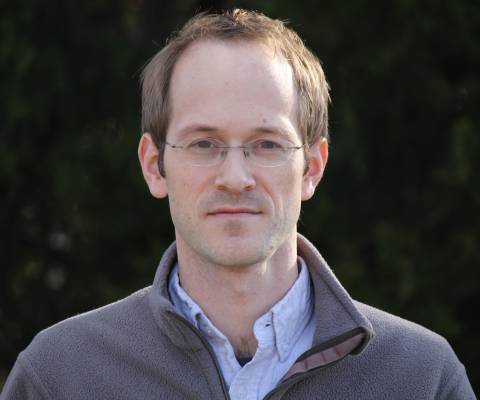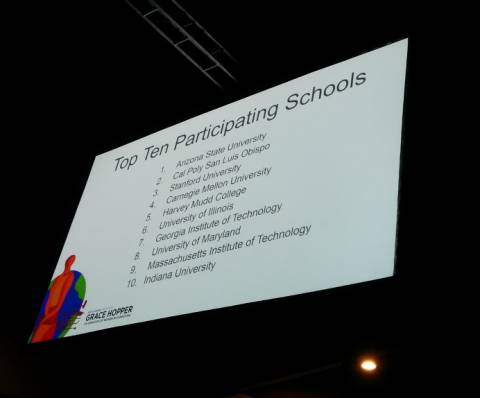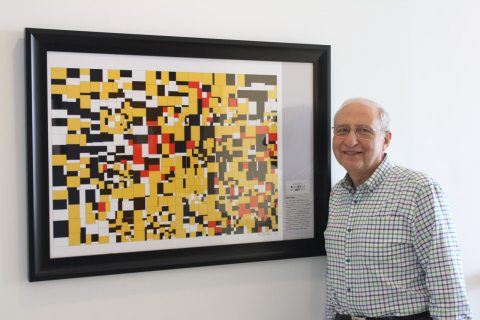Recent News & Accomplishments
2014
In an article addressing the future of artificial intelligence, Tanya Lewis of Live Science.com turned to Professor Don Perlis for insight on the history and developments that have taken place in AI over the last several years. Perlis explained to Lewis that humans have eagerly anticipated the development of 'conscious machines' since the inception of Artificial Intelligence studies in the 1950s. The research that Perlis conducts with his colleagues and students include artificial intelligence: commonsense reasoning; flexible, domain-general, self-adjusting autonomous systems; and... read more
The department is pleased to announce that Marine Carpuat will join the faculty in the Spring of 2015 as an Assistant Professor. Carpuat's main research areas are multilingual natural language processing and statistical machine translation. She designs computational models that use second languages as meaning annotation to make language processing applications more accurate, more robust, and more useful. She is currently a researcher with National Research Council Canada . Prior to NRC, Carpuat was a postdoctoral researcher at the Columbia University Center for Computational Learning Systems... read more
Horace Ip's dissertation entitled: " Towards Data-Driven Large-Scale Scientific Visualization and Exploration" has won the IEEE Visualization and Graphics Technical Committee (VGTC)'s Best Dissertation of the Year award. Horace's advisor is Amitabh Varshney. IEEE VGTC sponsors the annual Best Doctoral Dissertation Award program to recognize outstanding academic research and development in visualization and visual analytics. The competition is administrated by the IEEE Visualization Pioneers Group (VPG) under the auspices of IEEE VGTC. The IEEE VGTC VIS Pioneers Group Doctoral Dissertation... read more
Associate Professor Andrew Childs is a new co-director of the Joint Center for Quantum Information and Computer Science (QuICS). Childs says he is determined to help the university make strides in the field of quantum information. "At QuICS, we will try to better understand the power of quantum computers, enabling revolutionary information processing technologies," Childs says. "Maryland is already a major player in quantum information, and through QuICS, we will grow into a leading center for quantum computer science." QuICS is the latest addition to the university’s commitment to securing a... read more
Assistant Research Scientist Dave Levin (CS) and Assistant Professor Tudor Dumitras (ECE) worked with a team of computer scientists from Northeastern and Stanford universities on "Analysis of SSL Certificate Reissues and Revocations in the Wake of Heartbleed." Their paper, presented at the ACM 2014 Internet Measurement Conference in Vancouver, BC, addresses the difficult task of measuring whether or when a systems administrator should have revoked a certificate (for the secure operation of a public key infrastructure or PKI) in the wake of a security threat--in this case, Heartbleed. Both... read more
Provided by Funds from BRAID Initiative Grant
Last October, over 30 women students and faculty attended the Grace Hopper Celebration held in Phoeniz, AZ. With funding from the recently-formed BRAID Initiative, they were able to travel to the world's largest gathering of women technologists free of charge. The University of Maryland will receive $30,000 per year for three years to support efforts to increase the number of women and students of color who major in computer science. UMD is one of 15 universities that will be supported by the Building Recruiting And Inclusion for Diversity (BRAID) initiative led by the Anita Borg... read more
Center researchers aim to understand how quantum systems can store, transport, process information
The University of Maryland (UMD) and the U.S. Department of Commerce’s National Institute of Standards and Technology (NIST) announced today the creation of the Joint Center for Quantum Information and Computer Science (QuICS), with the support and participation of the Research Directorate of the National Security Agency/Central Security Service (NSA/CSS). Scientists at the center will conduct basic research to understand how quantum systems can be effectively used to store, transport and process information. This new center complements the fundamental quantum research performed at the... read more
The University of Maryland announced today it received a five-year, $425,000 gift from the Armed Forces Communications and Electronics Association (AFCEA) Bethesda Chapter to support undergraduate student scholarships and an outreach program that encourages middle school students from underrepresented groups to explore computer science. AFCEA Bethesda also contributed a total of $550,000 to four other local educational institutions to create a pathway for local elementary through high school students interested in pursuing a career in science, technology, engineering and mathematics (STEM)... read more
In his Fall 2014 Video Message , University President Wallace Loh took time to highlight the record $34 million in donations by Brendan Iribe, Michael Antonov and Elizabeth Iribe to establish the Brendan Iribe Center for Computer Science and Innovation , as well as other generous donations of $4 million to establish the Elizabeth Iribe Chair in Computer Science, another endowed professorship as well as several scholarships. President Loh's mention of the Center starts at the 1:17 mark. read more
Ben Shneiderman 's treemap art project Every Algorithm has Art in It will be a featured exhibition at the National Academies Keck Center in Washington, DC. The opening night, October 16th, will feature panelists on the subject of Technology and Creativity , including Jon Froehlich, who will talk about wearable technologies. When asked about Shneiderman's work, Froehlich observes that "Ben's Treemap algorithm is a type of "space-filling" visualization that cleverly uses proportionally sized rectangles to reveal relationships in hierarchical data. Originally developed for visualizing hard drive... read more








